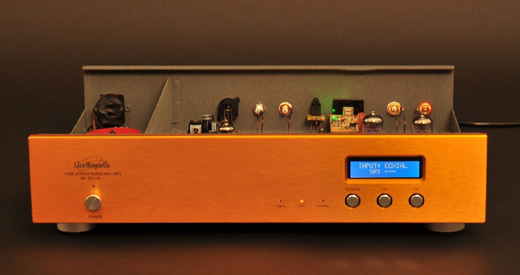YEP, IT’S YET another breakthrough in storage capacity. A big one, this time.
Did you know that 90 percent of all information currently stored by mankind was generated in the last two years, and that the rate of data creation is increasing almost exponentially?
Scientists Zongsong Gan, Yaoyu Cao, Richard A. Evans & Min Gu have developed a technique that will increase the capacity of a DVD to 1 petabyte, or 1000 terabytes. That’s something like 200,000 times as much data than before: 50,000 full length HD movies, and well over 2.5 million CDs.
The technique used is 3D deep sub-diffraction optical beam lithography with 9nm feature size. Current fabrication techniques working in the nanometer range, including electron beam lithography, are limited by being incapable of arbitrary three-dimensional nanofabrication. This restriction has led to the rapid development of far-field three-dimensional optical beam lithography where a laser beam is focused for maskless direct writing. However, the diffraction nature of light is a barrier at nanometer levels, leading to work on three-dimensional optical beam lithography with 9nm feature size and 52nm two-line resolution in a newly developed two-photon absorption resin with high mechanical strength. The revealed dependence of the feature size and the two-line resolution confirms that they can reach deep sub-diffraction scale limited only by the mechanical strength of the new resin. This allows portable three-dimensional maskless laser direct writing with resolution fully comparable to electron beam lithography.
Okay, so that’s a bit techie. I like it, but unless you’ve studied laser physics and/or optoelectronics, it might not make much sense.
So let’s make it a bit simpler.
First, we need to understand how data is stored on optical discs such as CDs and DVDs. These discs have a low data storage capacity. Really. 4.7Gb on a DVD, and even 25Gb+ on a Blu-ray doesn’t go far these days.
The way optical data storage works is fairly simple. When you burn a CD, for example, the information is transformed to strings of binary digits (0s and 1s). Each 0 or 1 is then laser ‘burned’ into the disc in the form of dots, using a single beam of light. The storage capacity of optical discs is mainly limited by the size of the dots, and smaller dots allow more data to be stored in the same area. Blu-ray discs use smaller dots than DVDs, which use smaller dots than CDs. So why not just use smaller dots?
Abbe’s law states that the diameter of a spot of light, obtained by focusing a light beam through a lens cannot be smaller than half its wavelength, or around 500 nanometers (500 billionths of a metre) for visible light. While this law plays a huge role in modern optical microscopy, it also sets up a barrier for any efforts from researchers to produce extremely small dots – less than 100 nanometer in diameter – to use as 0s and 1s.
The solution is fairly complex, but effectively uses two light beams of different colours, red and purple, instead of the single beam normally used. Both beams must abide by Abbe’s law, so they cannot produce smaller dots individually, but the two beams are used in different ways: the red, or writing, beam has a round shape, and is used to write on the disc, while the purple beam is donut – or ring-shaped – and plays an anti-recording function, acting as a mask and preventing the writing beam from working over the area it would normally affect. When the two beams are overlapped, the red beam can only write through the hole of the purple beam, producing an effective focal spot of nine nanometers – or one 10 thousandth the diameter of a human hair.
Clever, innit? Seems an obvious solution, but the trick is producing the ring-shaped light beam to start with. Of course, it doesn’t really matter quite so much what the actual outside diameter of the ring is, provided the ‘hole’ in the centre is tightly controlled.
The created effective 9nm diameter beam gives exceptional penetration (when compared to the comparatively torch-like beam of a DVD writer) allowing for 3D recording or fabrication, which dramatically increases the potential data storage – the number of dots – on a single optical device.
This technique is also cost-effective and portable, as only conventional and currently available optical and laser elements are used, and it allows for the development of optical data storage with long life and low energy consumption. So it’s ideal for pretty much everyone to use. GRAHAM MANNING















